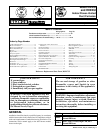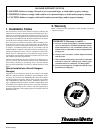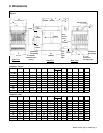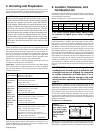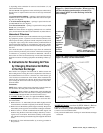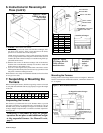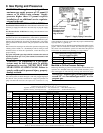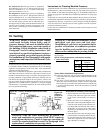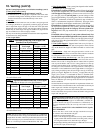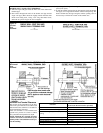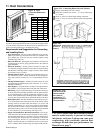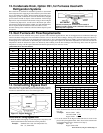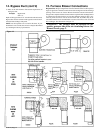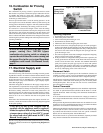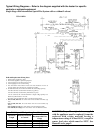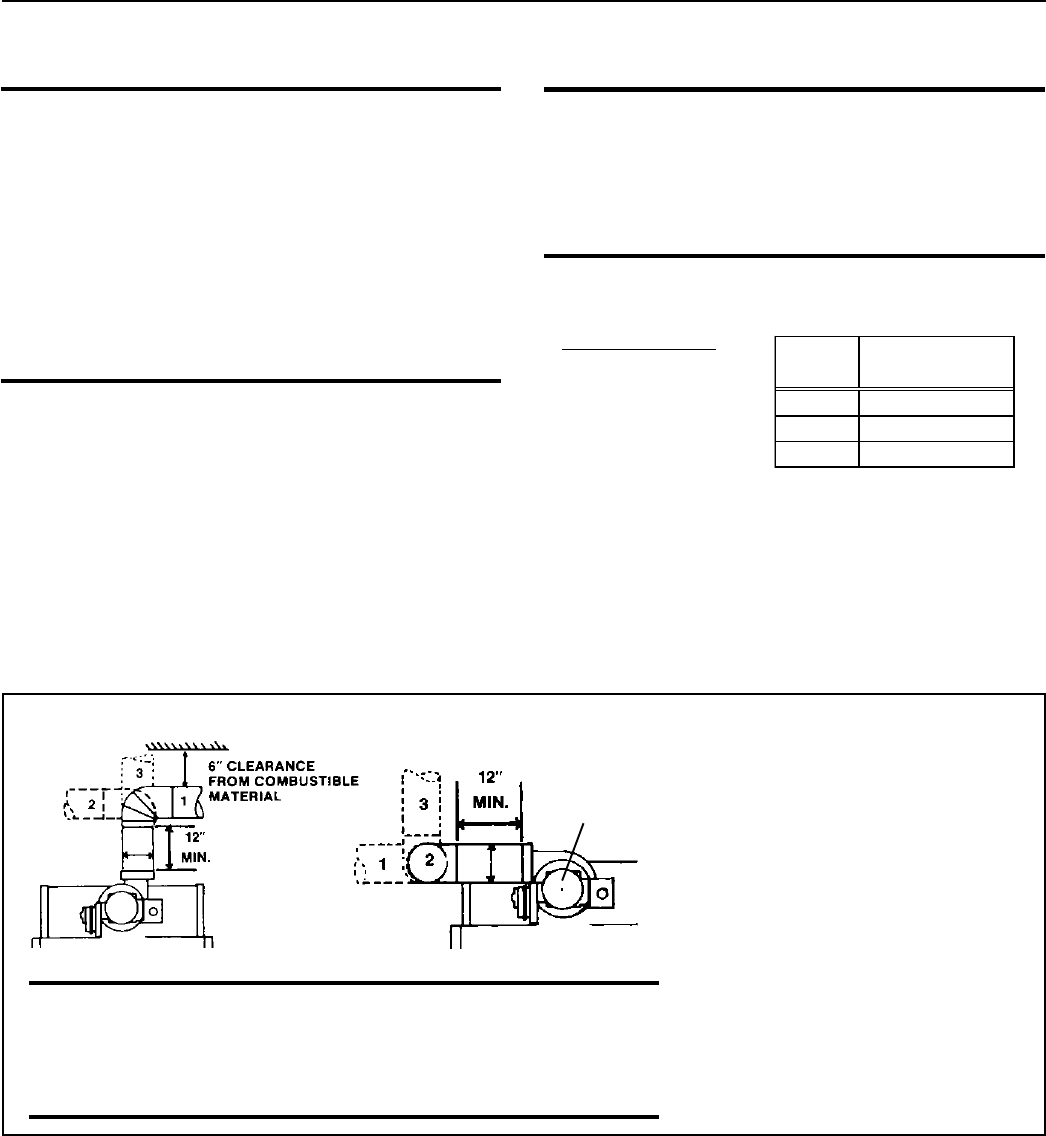
RGM Form 421, Mfg No. 150492, Page 9
10. Venting
WARNING: Failure to provide proper venting
could result in death, serious injury, and /or
property damage. Unit must be installed with a
flue connection and proper vent to the outside of
the building. Follow installation codes listed in
Paragraph 1 and all venting instructions. Safe
operation of any gas-fired equipment requires a
properly operating vent system, correct provision
for combustion air (See Paragraph 5) and regular
maintenance and inspection. See Hazard Levels,
page 2.
Venting must be in accordance with the National Fuel Gas Code Z223.1
or CAN/CGA B149.1 and B149.2, Installation Code for Gas Burning
Appliances and Equipment, and all local codes. Local requirements
supersede national requirements.
These power-vented units are designed to operate safely and efficiently
with either a horizontal or vertical vent. (Horizontal vent run is recom-
mended for maximum fuel savings.) Use either vent pipe approved for
a Category III heater or appropriately sealed single-wall pipe. Or, if at
least half of the equivalent length of the vent system is vertical, vent
pipe approved for a Category I heater may be used. A vent cap of a type
approved for use with this heater is required. If a vent cap is shipped
with the heater, it is packaged attached to the venter housing. Detach
the vent cap from the housing.
Venter Outlet Attachment Requirements:
o If the pipe used in the vent run is larger than the diameter of the
venter outlet (See Vent Length Table 2), make the transition at the
venter outlet.
o The venter is factory-installed as illustrated in Figure 8A. If re-
quired, the venter housing may be rotated as shown in Figure 8B.
The vent may be run in either of the three directions as indicated by
1, 2, and 3 in the illustrations. Follow the instructions to rotate the
venter housing.
For Natural Gas: Manifold gas pressure is regulated by
the combination valve to 3.5" w.c. Inlet pressure to the valve
must be a minimum of 5" w.c. or as noted on the rating
plate and a maximum of 14" w.c.
For Propane Gas: Manifold gas pressure is regulated by
the combination valve to 10" w.c. Inlet pressure to the valve
must be a minimum of 11" w.c. and a maximum of 14" w.c.
Before attempting to measure or adjust manifold gas pres-
sure, the inlet (supply) pressure must be within the speci-
fied range for the gas being used both when the heater is in
operation and on standby. Incorrect inlet pressure could
cause excessive manifold gas pressure immediately or at
some future time.
Instructions for Checking Manifold Pressure:
1) With the manual valve (on the combination valve) positioned to prevent flow to
the main burners, connect a manometer to the 1/8" pipe outlet pressure tap in the
valve. NOTE: A manometer (fluid-filled gauge) is recommended rather than a
spring type gauge due to the difficulty of maintaining calibration of a spring type
gauge.
2) Open the valve and operate the heater. Measure the gas pressure to the mani-
fold. Normally adjustments should not be necessary to the factory preset regulator.
If adjustment is necessary, set pressure to correct settings by turning the regulator
screw IN (clockwise) to increase pressure. Turn regulator screw OUT (counter-
clockwise) to decrease pressure.
Consult the valve manufacturer's literature provided with the furnace for more
detailed information.
WARNING: Units installed in multiples require
individual vent pipe runs and vent caps.
Manifolding of vent runs is not permitted due to
possible recirculation of combustion products
into the building and possible back pressure
effects on the combustion air proving switch.
Comply with the specific requirements and instructions in the follow-
ing paragraphs.
Specific Venting Requirements (read all before installing)
1. Venter (Flue) Outlet
Figure 8B -
Alternate
Position of
the Venter
Housing
Instructions for Rotating Venter Housing
1. Remove the three screws that attach the venter
housing to the outlet duct (pipe from furnace
to the venter). The assembly will remain in
place.
2. Remove the three screws holding the motor
plate to the venter housing. Holding the motor,
rotate the venter housing to the alternate posi-
tion (Figure 8B). Re-attach the motor plate to
the housing. (To ensure correct venter wheel
alignment, pre-punched holes are provided in
the motor plate.)
3. Using the holes in the venter housing as a tem-
plate, drill three 1/8" diameter holes in the out-
let duct. Re-attach the venter housing to the
outlet duct using the three screws removed in
Step 1. Rotation is complete.
Figure 8A - Factory-Installed Position of the Venter
Housing
WARNING: Only the venter housing may be rotated. The
motor and combustion air proving switch MUST remain as
received from the factory. Unsafe or improper operation will
result if the standard position is varied. See Paragraph 16 for
explanation of combustion air proving switch.
Size
Venter Outlet
Diameter
75 - 200 4"
225 - 250 5"
300 - 400 6"



